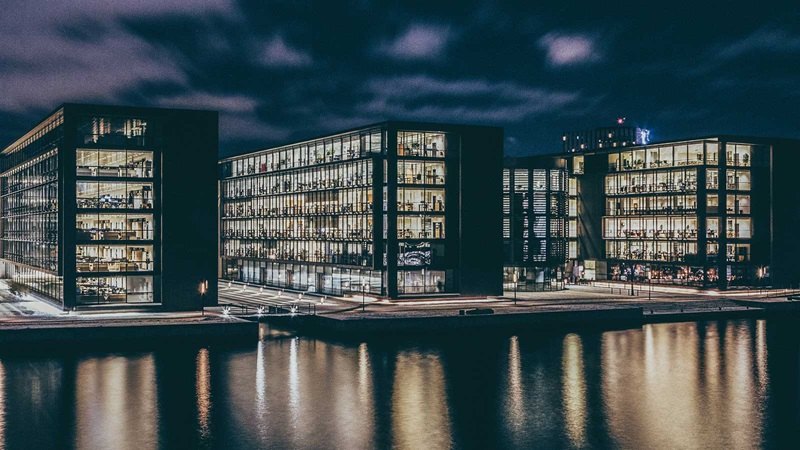Powering up: tackling energy efficiency in the commercial office sector
With the global pandemic continuing to affect the use of corporate office space, businesses have a unique opportunity to make significant savings by reducing their buildings’ energy use.
James Low, Associate Director of Sustainability at Mace, talks about how companies can understand their buildings better and what they can do to reap the rewards now and to support their ongoing journey to net zero carbon.
Research has shown that during the height of the pandemic, when global occupancy rates dropped to just 20%, commercial buildings were still consuming, on average, 80% or more of their usual energy levels. With recent health and safety guidance in some countries advocating increases in fresh air ventilation and social distancing meaning the same amount of floor space is often still being used, in some buildings energy use has actually increased.
Even before the pandemic, when offices were buzzing at full capacity, energy waste was a major issue. According to Green Alliance, wasted energy costs UK businesses alone as much as £60m a year – that’s the annual equivalent of carbon emissions from 46,000 cars.
Pre-COVID, when occupancy profiles were more consistent and predictable, efficiently managing building systems was often a challenge in buildings. Now, with periodic local lockdowns and wildly fluctuating occupancies it’s even more challenging.
Here are two key actions that can help:
Improve the automation of building systems
If we have had an 80% reduction in building occupancy, why are we not seeing an 80% in energy use? Many offices are still using the same floor space due to social distancing, others are unable to shut down whole floors or large zones, and many still require the controls to split heating, ventilation, and air conditioning (HVAC) systems to that level.
Utilising controls across building systems, including lighting, that will automatically adjust or switch off when not required will reduce waste when occupancy is at its lowest, while future consideration of zoning will enable areas of a floor to be switched off or closed for periods of time.
The efficiency curve of HVAC equipment also has an impact, where a 50% reduction in fan speed within air handling units does not equate to a 50% reduction in energy use. However, in replacing alternating current (AC) fans with an electronically commutated (EC) fan upgrade can alone provide energy savings of around 20%.
Using sensors to determine actual demand
Time will tell how the office/home working balance will unfold over the coming months and years, but what is certain is that there won’t be a consistent occupancy pattern for some time yet.
The reliance on pre-set building management system (BMS) set points and profiles will be too rigid, and result in wasted energy to heat, cool, ventilate and light workplaces with ever changing demands. But if we start to incorporate sensors and artificial intelligence (AI) we can really start to operate smart buildings.
CO2 sensors are commonly used to inform demand controlled ventilation systems, but this can create a feedback lag such that more or less ventilation is provided than is actually needed at that moment in time. Products such as LightFi suggest that up to 40% energy reductions can be achieved by using wifi or Bluetooth signals from phones and laptops to determine accurate and live occupancy levels in a building, and therefore inform the HVAC systems to immediately provide the correct ventilation rates.
Additionally, instead of providing a pre-determined and fixed rate of fresh air ventilation, property teams should actually monitor the indoor relative humidity and air quality such that an acceptable internal environment is maintained.
With energy use one the most significant contributors to commercial carbon emissions the reality is that to meet net zero carbon ambitions, as many businesses are setting themselves, more must be done to make workplaces more efficient.
With change and new ways of working here to stay, it is key we take this opportunity to improve building performance, not just because it makes business sense, but also for the benefit of the planet.











